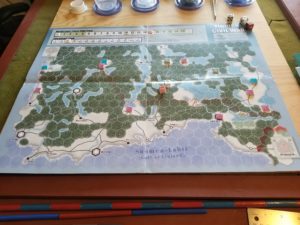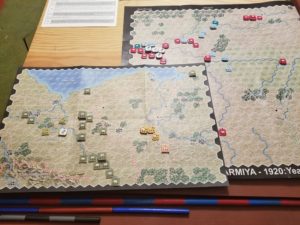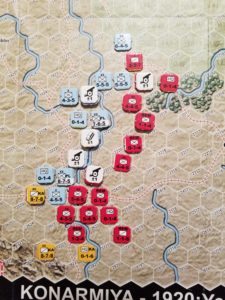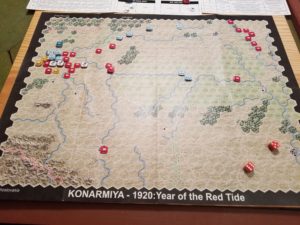Set up and have started playing another Brian Train post-WW1 game, Finnish Civil War. Good game.
It’s a smaller scale game, focusing on companies and battalions. There is a separate set of rules for regiments/brigades, but the former best fits the conflict. While it follows the rules template used in Konarmiya and Freikorps, there is conflict-specific chrome.
The Events Phase not only has a die roll for random events, but also a determination for peace talk progress between the Soviets and Germans. The progress of these talks can trigger German intervention, or Russian withdrawl.
The Operations Phase uses chit pulls, rather than I-Go, U-Go based on highest morale initiative. Each side gets three operations segments. Units may either move overland, use rail movement, or conduct combat. Overland movement is very, very slow given weather and terrain. Zones of control only effect rail movement.
As with the other games, Political Rules effect morale which, in turn, effects operations and combat.
The companies have low combat strengths. So far, developing high odds attacks has been difficult. The Finns can use replacement points to build battalions. This should be a real advantage, and one I am looking forward to seeing in action.
Victory is determined by which side controls the most cities and towns.
Here’s a picture depicting the start of Turn 3.



